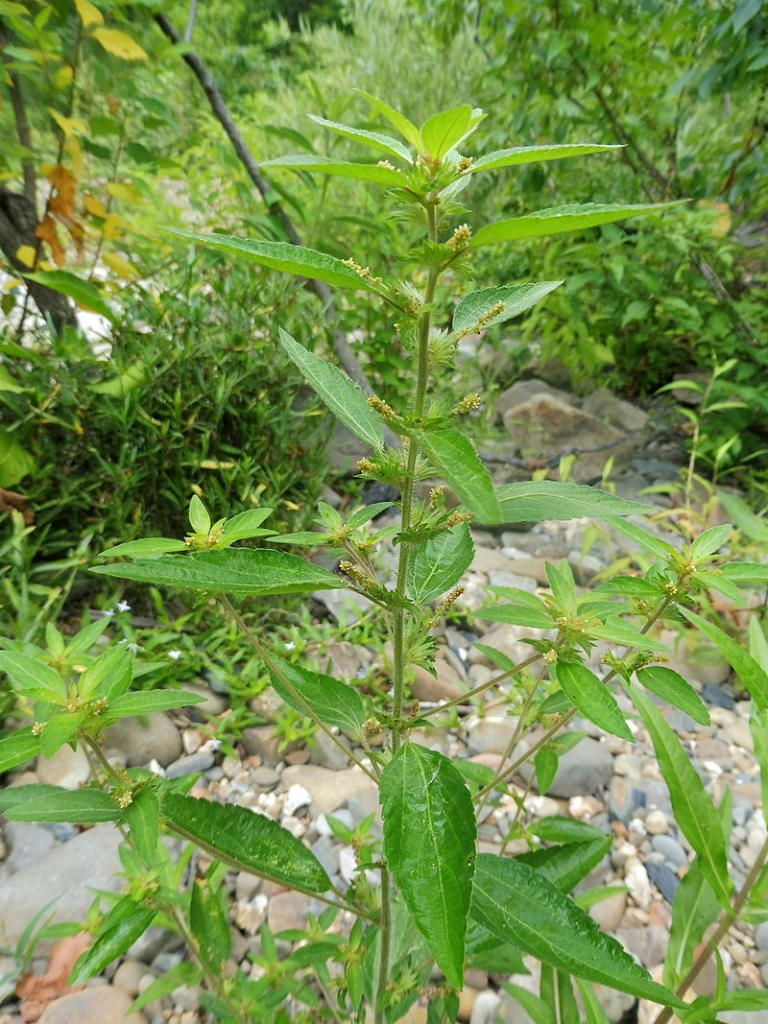
Also known as mercuryweed, threeseeded mercury, and wax balls, this summer annual is a member of the spurge family, Euphorbiaceae, that also includes poinsettia , croton, and caster oil plant. It is native to eastern US from Maine to Florida but is found west to South Dakota and Texas where It grows in disturbed sites such as woodlands, fields, meadows and shores of rivers and lakes. Although considered a weed, it is not invasive, and provides food for birds and mammals. The sap/juice of the plant, however, is mildly poisonous to humans causing contact dermatitis or vomiting and diarrhea if ingested. Photo Credit Wikipedia
Description: Growing up to 3′ tall, Virginia copperleaf has a taproot with a secondary fibrous root system and erect, terete, unbranched stems, moderately covered with hairs. The lanceolate leaves are 3/4-3″ long, toothed, and become copper colored with maturity. They grow closer together near the top of the stem creating a flat top appearance. Clusters of inconspicuous greenish male and female flowers appear in the leaf axils on the upper stems of the same plant from summer to fall. The female flowers are surrounded by hairy, green, deeply lobed bracts. The fruit is a 3-celled capsule, each cell containing one egg-shaped gray to brownish red seed.
Control: In spite of its tap root, Virginia copperleaf is easily hand pulled and plants should be removed before seed set. A 3″ layer of mulch is also effective in controlling the plant.
t. Both
flower types are inconspicuous, greenish,
and produced in clusters in the leaf axils
on the upper stem. Female flowers are
surrounded by conspicuous, bracts that
have 9 to 15 deep lobes